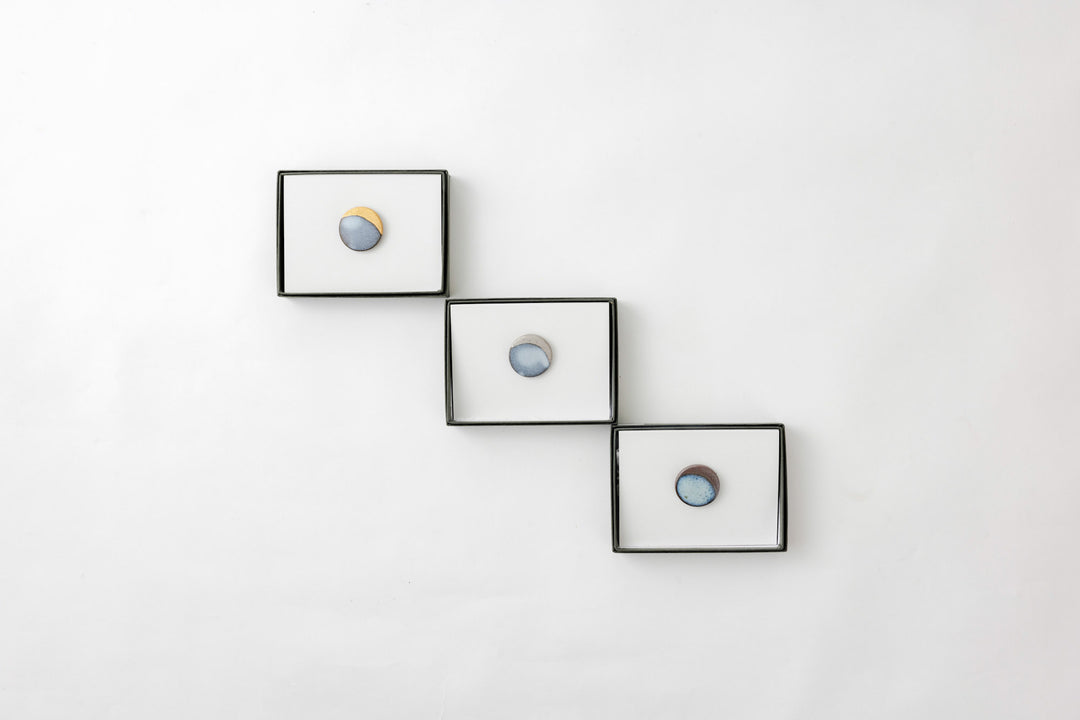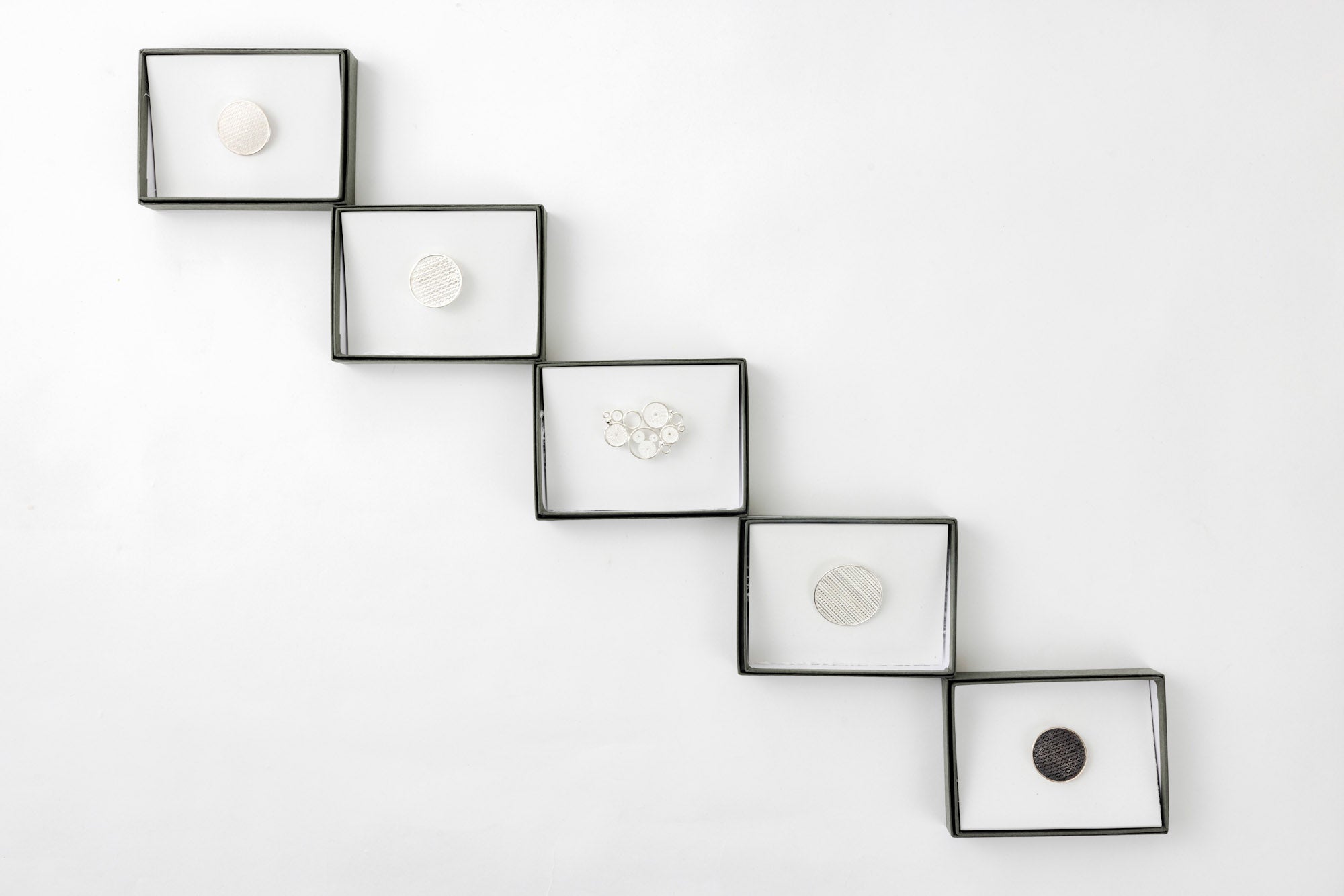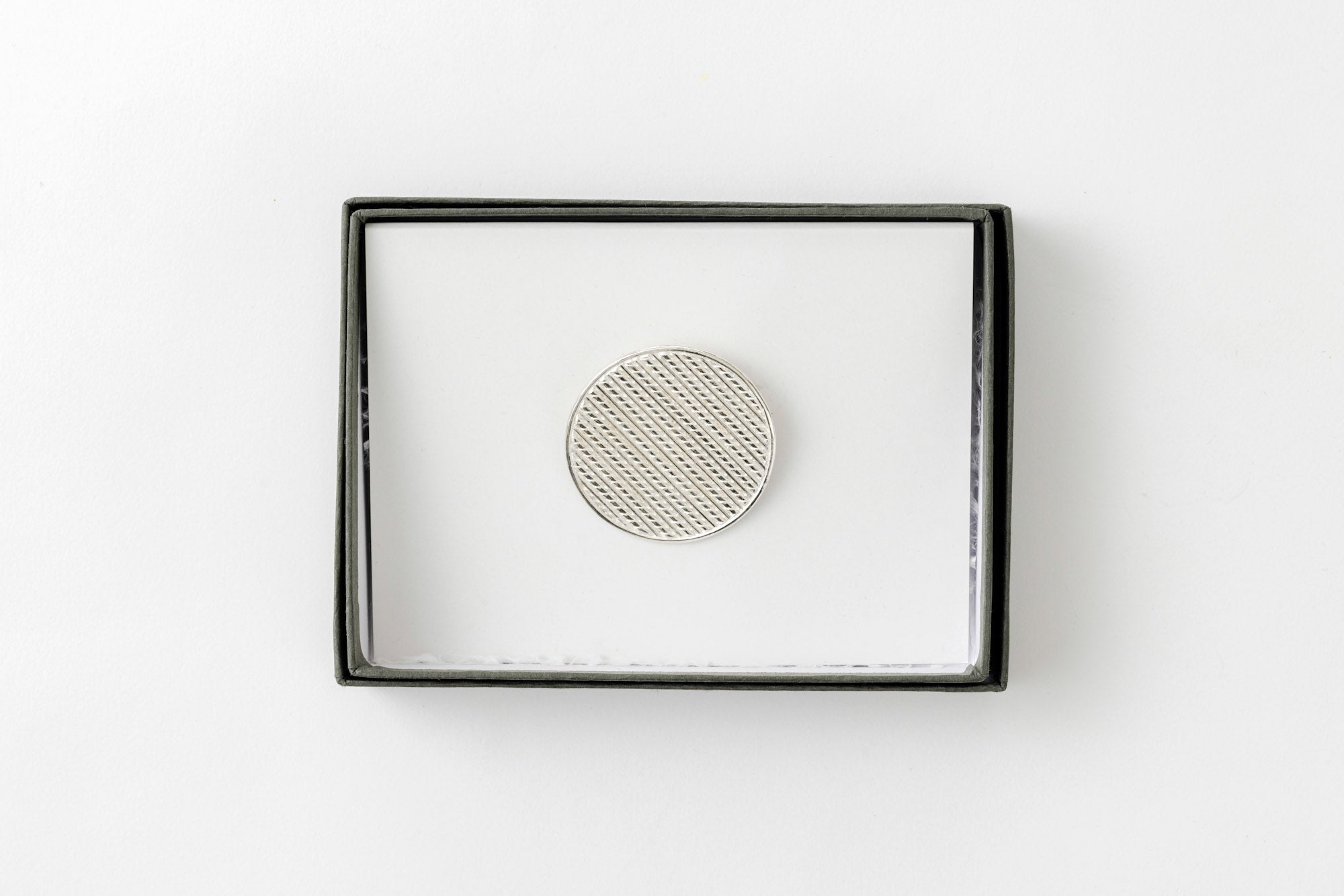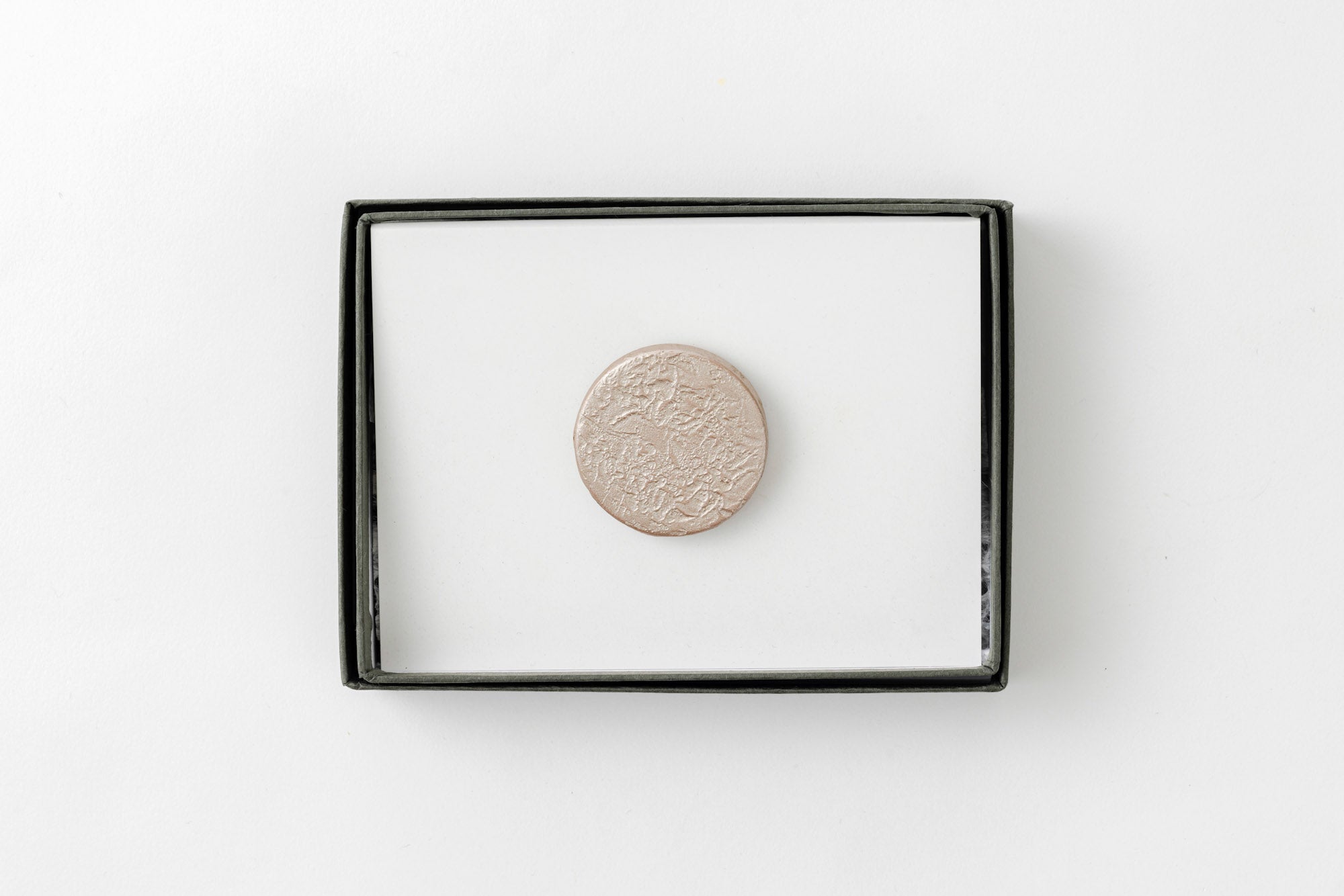
MEMENTOS pays homage to the traditional crafts and craftspeople of Akita Prefecture. Handmade with materials from the workshops of artisans whose techniques have been and continue to be passed down over generations, each MEMENTOS brooch is a piece of the past, present, and future.
Urushi refers to Japanese lacquer, a craft which has existed in Japan since at least 7000 BCE. Urushi is made of sap extracted from the urushi tree which is then refined in a highly specialized process, applied to objects, usually wood, in layers, and decorated with gold and silver powder and other adornments.
Kawatsura Urushi originated in what is now Yuzawa, Akita 800 years ago. It was first used to coat things like armor, shields, and weapons of the ruling lords and their retainers. Kawatsura Urushi continued to develop into an advanced local industry producing tableware, furniture, trinkets, and more. Urushi remains an important part of the local culture to this day.


Silversmithing has a long history in Akita Prefecture, which was once one of the most important centers of silver production in Japan. In the early 1600’s, skilled gold and silversmithing masters came to Akita from the Ibaraki area. Along with expert swordsmithing, fine gold and silversmithing boomed in the region. Various precious metal items were produced for the samurai class, and even after the days of samurai, ornate accessories such as delicate hairpins continued to be in demand. Handmade Akita Silver Filigree, a prefecturally-designated traditional craft, is part of this history and continues to be passed down in the region.
Cherry barkware, kabazaiku in Japanese, developed in the samurai town of Kakunodate, Akita during the late 1700’s and became a second income for many of the local, low-ranking samurai. This sophisticated craft uses bark from the region’s abundant cherry trees (carefully harvested to allow for regrowth) to fashion insulated containers, trays, decorations and more. The tradition continues to be passed down to this day in Kakunodate.


Shiraiwayaki is a traditional form of pottery from Shiraiwa, Akita with a history dating back to the 1700’s. Its deep blue namako glaze is reminiscent of the color of sea cucumber, namako in Japanese, from which it takes its name. The techniques of this pottery were guarded carefully by the local artisans, and the area grew to have a flourishing local industry with plenty of demand. Due to various events of the Meiji Period, the craft went extinct for about 70 years, but with a lot of research and effort it was revived by the Watanabe family who run the only Shiraiwayaki kiln in Japan to this day.































